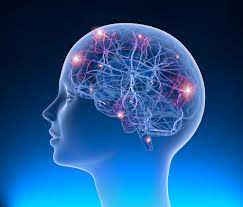February 11, 2025 – A groundbreaking study from Princeton neuroscientists has unveiled a new mathematical model that sheds light on how the brain processes sensory information to make decisions. This innovative framework could enhance our understanding of neurological disorders, such as Alzheimer’s, and improve artificial intelligence systems like digital assistants and self-driving cars.
The research, published on February 10 in Nature Neuroscience, explores how the prefrontal cortex—an area behind the eyes responsible for higher cognition—integrates multiple sensory signals during decision-making. The study addresses a longstanding question: How does the brain manage conflicting sensory inputs, such as a crosswalk signal and an approaching ambulance, to make an appropriate decision?
Previous research has shown that single neurons in the prefrontal cortex respond in complex ways to different stimuli. For example, one neuron might activate only when a green traffic light is visible but a car is blocking the crosswalk. However, a unified theory explaining how these neurons work together to guide behavior has remained elusive.
To tackle this challenge, postdoctoral researcher Christopher Langdon, Ph.D., and assistant professor Tatiana Engel, Ph.D., developed a novel mathematical approach known as the latent circuit model. Unlike traditional models that rely on intricate neural networks with numerous interconnections, the latent circuit model simplifies the process by identifying a few key neurons that act as “ringleaders” in decision-making.
“The goal of the research was to determine whether low-dimensional mechanisms operate inside large neural networks,” Langdon explained.
The researchers tested their model using a decision-making task involving context-dependent visual cues. Participants, including humans, monkeys, and artificial neural networks, had to determine either the color or motion of a moving grid based on an initial shape cue. The model revealed that when one sensory cue was deemed important, neurons associated with it suppressed activity in neurons processing other cues.
“It was very exciting to find an interpretable, concrete mechanism hiding inside a big network,” Langdon said.
The findings suggest that by tweaking connections between specific neural nodes, decision-making processes can be altered in predictable ways. This insight could be valuable for understanding disorders like depression and ADHD, where decision-making is often impaired.
By bridging the gap between neural activity and behavioral outcomes, the latent circuit model has the potential to revolutionize both neuroscience and AI. Future research will explore how the model applies to more complex decision-making tasks, bringing scientists one step closer to decoding the computations that shape human choices.
Disclaimer: This article is based on current scientific findings and ongoing research. The implications for neurological disorders and AI applications are speculative and require further validation through experimental studies.











